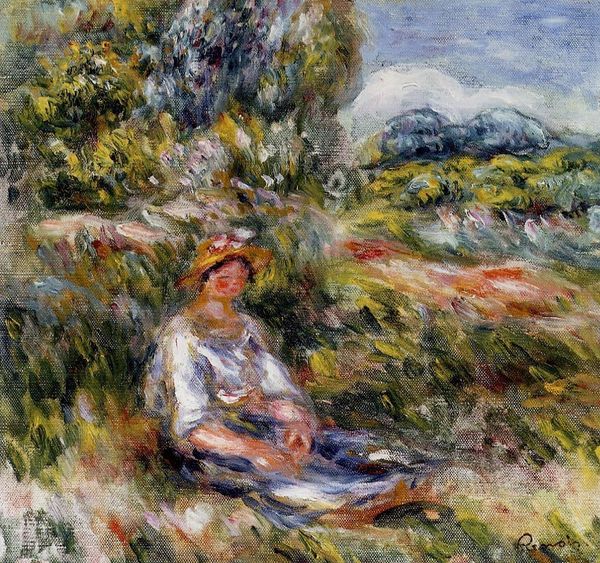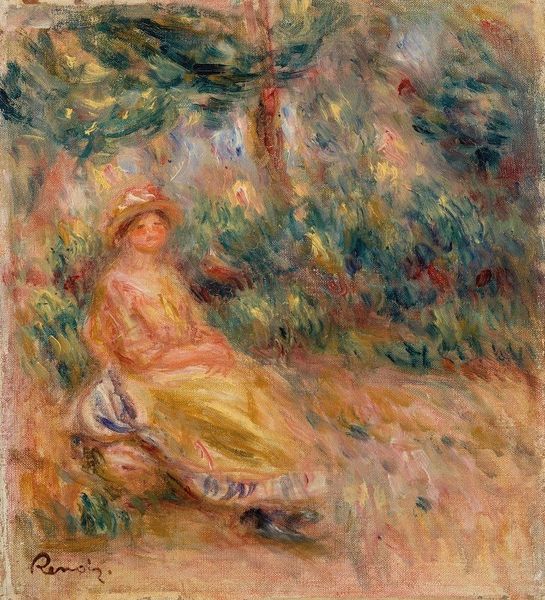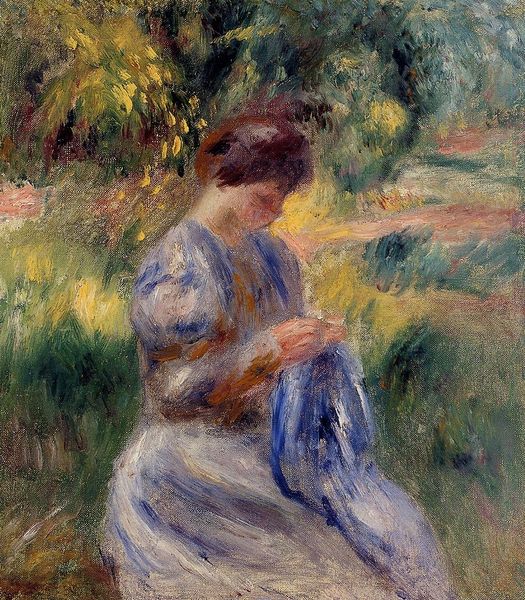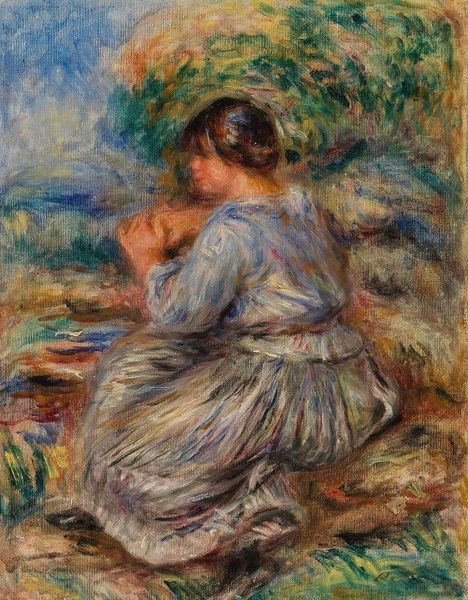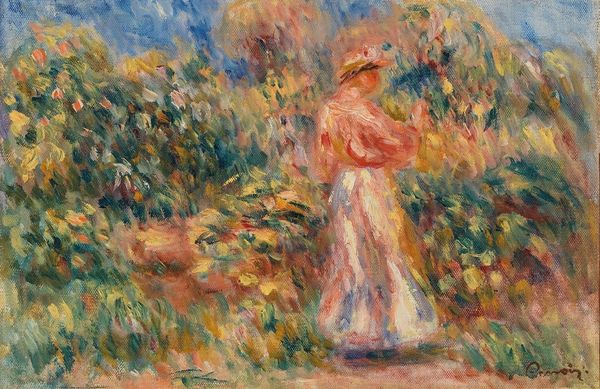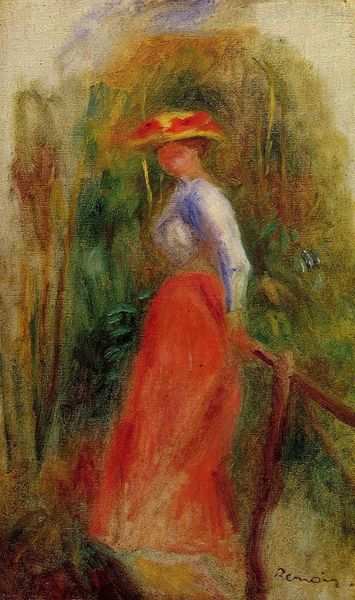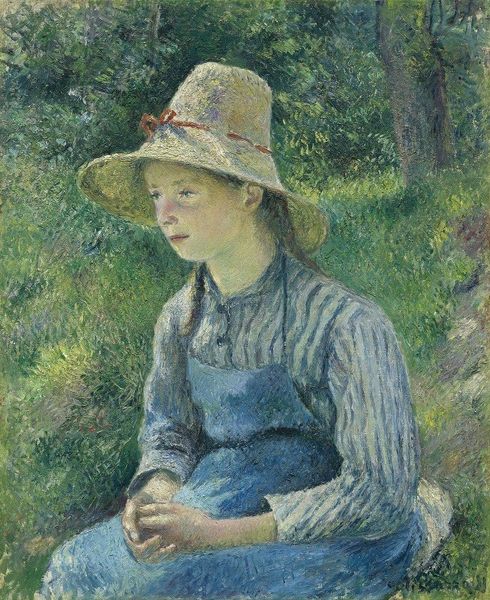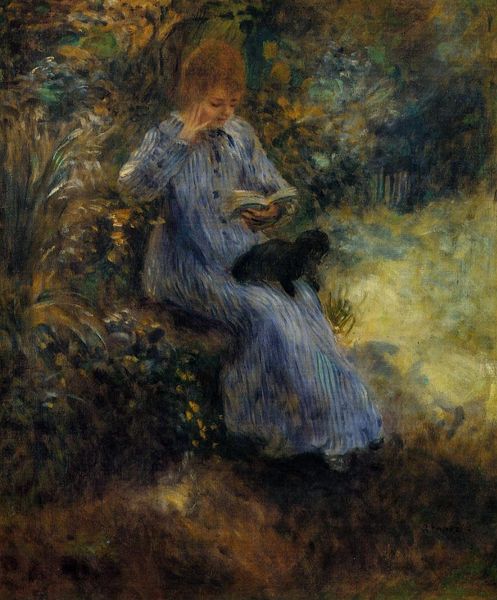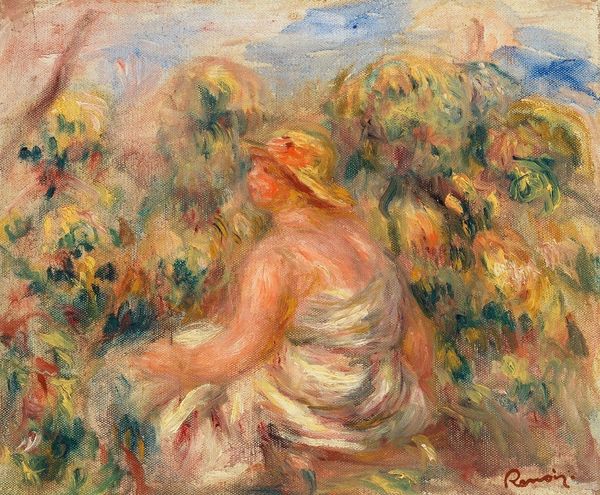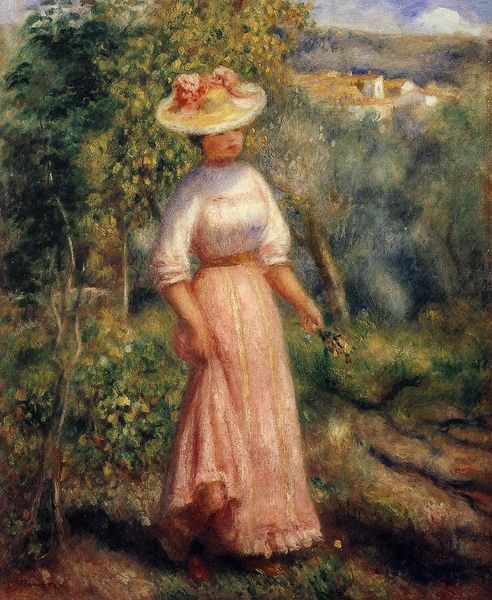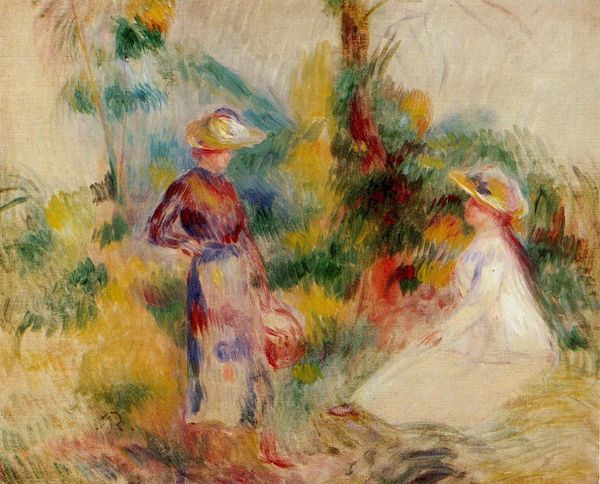
Copyright: Public domain
Editor: So here we have Renoir's "Woman in Blue in a Landscape," painted in 1916 with oils. The scene is really soft and hazy. It makes me wonder, what is Renoir trying to capture in this indistinct, dream-like style? Curator: This piece exemplifies Renoir's later style, far removed from his earlier Impressionistic urban scenes. Consider the year it was painted: 1916. World War I raged, dramatically shifting social and artistic currents. How do you think the public appetite for art changed during such times? Editor: Maybe people wanted something comforting, something escapist, instead of harsh reality? Curator: Precisely. The Impressionists initially challenged the academic art world by depicting everyday life. However, after the war, Renoir seemed less interested in challenging norms and more in offering idealized beauty, almost retreating to a classical aesthetic. Notice how the woman is seamlessly integrated into the landscape. Do you find the female figure is passive within the scenery? Editor: It seems like the woman and landscape almost blend together, yes. Her blue dress mimics the hues around her, there’s not a big differentiation. Curator: That merging diminishes her individual agency. Art historians debate this period of Renoir’s work: is it a soothing vision in a troubled time, or does it signify a regression into tradition? Consider also his declining health – did his focus shift from capturing reality to a more personal and nostalgic vision? Editor: That makes a lot of sense. Seeing it in the context of the war and Renoir's personal struggles really opens up new interpretations. It's much more complex than just a pretty picture. Curator: Exactly! Examining art through the lens of its historical and social context reveals its deeper layers of meaning and influence. It challenges our initial aesthetic reaction, doesn’t it?
Comments
No comments
Be the first to comment and join the conversation on the ultimate creative platform.

